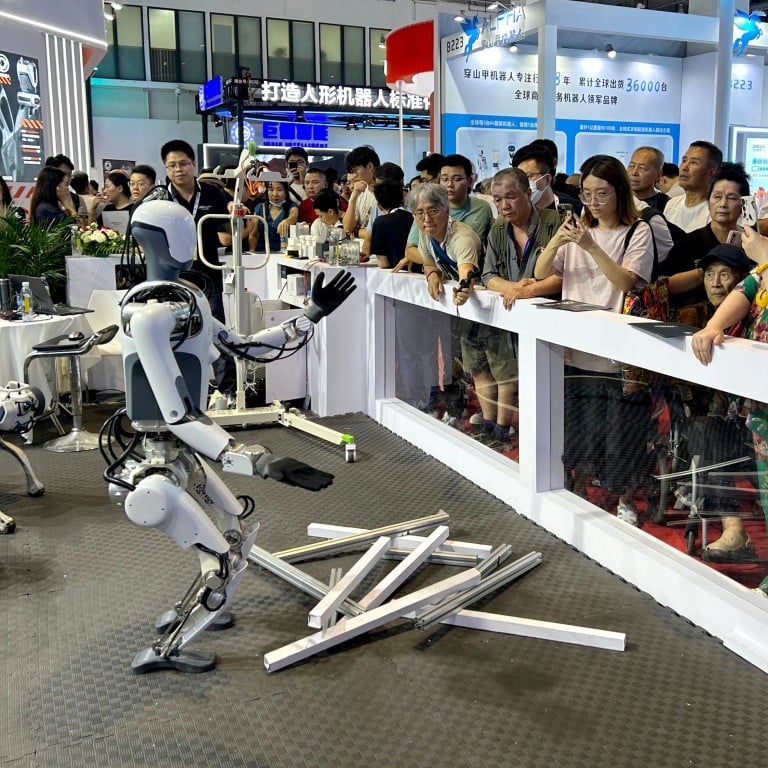Tesla’s Optimus bots, a centerpiece of Elon Musk’s vision for the future, were recently showcased at the 2024 Beijing Robot Conference, one of the world’s premier gatherings for cutting-edge robotics technology. This event, which brought together leading companies from around the globe, highlighted the rapid advancements in humanoid robotics, with Tesla’s Optimus bots drawing considerable attention. These bots, designed to handle tasks ranging from menial household chores to complex industrial work, represent Tesla’s ambitious plans to reshape the future of labor. However, despite the significant progress Tesla has made, the Optimus bots faced formidable competition from other global robotics firms, particularly those from China, which have been advancing rapidly in this space.
The development of Tesla’s Optimus bots is a significant milestone in the company’s journey toward realizing Elon Musk’s ambitious vision for the future. First introduced in 2021 during Tesla’s AI Day, the Optimus bots are designed to mirror human capabilities, standing approximately 5 feet 8 inches tall and weighing around 125 pounds. These humanoid robots are intended to perform tasks that are dangerous, repetitive, or simply undesirable for humans, making them ideal for a wide range of applications, from manufacturing to home care. Musk’s vision for these bots is expansive; he envisions a world where Optimus bots are commonplace, working alongside humans in factories, assisting in household tasks, and even contributing to more complex tasks in healthcare and service industries.
Elon Musk has consistently emphasized that the Optimus bots are not just another product, but a critical component of Tesla’s broader mission to accelerate the world’s transition to sustainable energy. By automating repetitive and labor-intensive tasks, these robots could significantly boost productivity and allow humans to focus on more creative and strategic work. Tesla has leveraged its expertise in AI and robotics, particularly the technology used in its self-driving cars, to develop the Optimus bots. These robots are equipped with advanced neural networks, allowing them to process complex data, navigate environments autonomously, and learn from their experiences. This development process has been iterative, with each prototype building on the last, pushing the boundaries of what humanoid robots can achieve.
However, while Tesla’s Optimus bots are undoubtedly impressive, they are not without competition. The 2024 Beijing Robot Conference highlighted the fierce rivalry in the global humanoid robot market, with companies from across the world showcasing their latest innovations. Chinese robotics firms, in particular, have made significant strides in this field, unveiling robots with capabilities that rival those of Tesla’s Optimus bots. These companies are not only focused on matching Tesla’s technological advancements but are also striving to make their robots more affordable and accessible, aiming to capture a larger share of both domestic and international markets.
One prominent competitor is UBTECH Robotics, a leading Chinese firm that has been at the forefront of humanoid robot development for several years. UBTECH’s latest model, which was showcased at the conference, boasts advanced AI capabilities, allowing it to perform a wide range of tasks, from customer service to complex problem-solving. This robot is designed to be both versatile and cost-effective, making it an attractive option for businesses looking to automate various functions. Another key player in the field is Agility Robotics, a U.S.-based company that has developed the Digit robot. Known for its impressive agility and ability to navigate challenging environments, Digit has been deployed in pilot programs across various industries, demonstrating its potential to revolutionize sectors like logistics and retail.
The competition is not limited to just a few companies; the humanoid robot market is becoming increasingly crowded, with startups and established firms alike racing to develop the most advanced and versatile robots. This intense competition is driving rapid innovation, with each company striving to outdo the others in terms of performance, affordability, and practical applications. As a result, the market for humanoid robots is expected to grow exponentially in the coming years, with Tesla’s Optimus bots facing stiff competition at every turn.
Looking ahead, the future of bots like Tesla’s Optimus is filled with both promise and challenges. On the one hand, these robots have the potential to transform industries, improve productivity, and free humans from dangerous or monotonous tasks. The vision of a workforce that includes both humans and robots working side by side is becoming increasingly plausible, and companies like Tesla are at the forefront of making this vision a reality. However, there are significant hurdles to overcome, including ensuring the safety and reliability of these robots, addressing ethical concerns about their widespread use, and navigating the complex regulatory landscape that governs robotics.
Elon Musk and Tesla are betting that their Optimus bots will lead the charge in this new era of humanoid robotics, but they are not alone. The global competition is fierce, and the race to develop the most advanced and versatile humanoid robot is far from over. The Beijing Robot Conference provided a glimpse into the future of robotics, where innovation is accelerating, and the possibilities are expanding. Whether in factories, homes, or healthcare, bots like Tesla’s Optimus could one day play a crucial role in shaping the way we live and work. As the technology continues to evolve, the future of humanoid robots is an exciting and dynamic space to watch, with Tesla’s Optimus bots poised to be a significant player in this rapidly growing market.
Tesla’s Optimus faces stiff humanoid competition at Beijing robot conference

